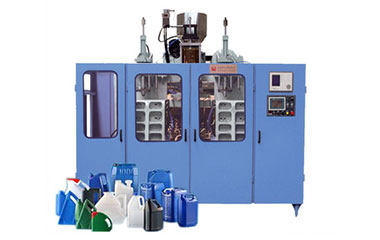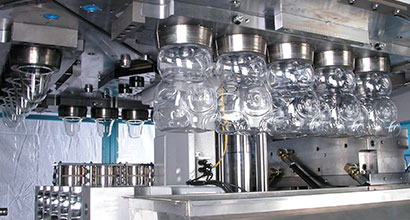
2024.3.9
In the process of making plastic bottles, precision molding is essential. Molding methods ensure that plastic bottles meet customer expectations by determining their strength, shape, and quality. Bottles that are functional, robust, and visually appealing are made using a variety of techniques, such as stretch blow molding and injection molding. It takes knowledge of the importance of perfect molding to appreciate the laborious process that goes into making the plastic bottles we use daily.

The plastic bottles serve to package necessities and to carry our favorite beverages. Knowing how these bottles develop is like being able to see behind the curtain and learning about the magic that creates our common containers.
Injection molding, extrusion blow molding, and stretch blow molding are a few of the molding processes used. Every technique has a special manner of making the bottles we utilize. For example, injection molding is the process of precisely shaping a bottle by injecting molten plastic into a mold.
In contrast, a molten plastic tube is inflated using air during the extrusion blow molding process to create the appropriate bottle form. Stretch blow molding is a process that combines blowing and stretching to produce a bottle with increased durability.
Businesses that produce plastic bottles need to know the nuances of these molding processes. Some aspects, including manufacturing speed, material concerns, and even the intricacy of the bottle design, are impacted by the choice of molding process.
The intriguing technique of molding serves to create plastic bottles. One of the most important aspects of the plastics business is this process of transformation from raw ingredients to recognizable water or soda bottles.

When it comes to making plastic bottles, injection molding is the best. This process forms the required bottle shape by injecting molten plastic into a mold. The plastic is given its ideal shape by the mold, which functions as a magical template. This effective method guarantees mass production and uniformity.
Plastic bottles start as PET preforms before taking on their final form. PET, or polyethene terephthalate, is a polymer that is often used in bottle manufacturing. These structures resemble tubes and originate from specific preform molds. Another molding process is then used to heat and blow these structures into the well-known bottle shape.
Blow molding is the process that turns a preform into a bottle. Similar to inflating a balloon, this method uses heat and air pressure to raise the preform. The plastic assumes the shape of the intended bottle as it swells to fill the mold. To get a distinctive shape and size, this stage is essential.
Extrusion blow molding is a variant of traditional blow molding, perfect for creating hollow plastic bottles. A plastic tube that has been melted and continually extruded gets pulled and sealed at the base to complete the operation. Once air is initially forced into the tube, it expands to take on the shape of a bottle.
Stretch blow molding is used for bottles that need to be strong and clear at the same time. An initial step in this technique involves heating a preform and stretching it both longitudinally and radially. This produces a container that is more resilient and clear, making it perfect for a variety of liquid and beverage packaging applications.
Injection and blow molding merge into a single machine in one-stage molding. This methodical technique is effective in cutting manufacturing costs and time. A smooth and integrated production flow occurs when the plastic is injected to form the preform, which is then instantly blown into the final bottle shape.
Choosing the ideal plastic bottle molding technique is like picking the ideal dancing steps for a show. This choice depends on several aspects, which guarantee a smooth and effective bottle-making procedure.
Selecting the appropriate plastic material is essential. Certain polymers respond better to particular molding techniques, guaranteeing that the finished container fulfils the required quality requirements.
Example: Choosing the appropriate plastic guarantees our bottles remain robust and safe, just like using different types of flour for baking.
Different molding techniques accommodate different quantities and rates of production. While some work well in mass manufacturing, others work best for creating specialized or limited-edition bottles.
Consider a competition where some competitors are sprinters and others are marathoners. Similar to this, different molding techniques have different rates of speed and endurance.
For complex bottle designs, some molding procedures work better. The molding technique must be carefully chosen to realize a bottle’s design if it calls for unusual forms or characteristics.
Example: Choosing the proper molding technique guarantees that elaborate bottle designs happen properly, just as an artist chooses the proper brush for a complex painting.
One cannot stress the need for precise shaping while making plastic bottles . The integrity, appearance, and usability of the finished product are greatly influenced by the molding processes used. Assuring that every bottle satisfies strict quality requirements, producers pursue perfection through blow molding, injection molding, and other techniques. Every detail is meticulously taken into account throughout the molding process, from the plastic’s clarity to its durability and form.